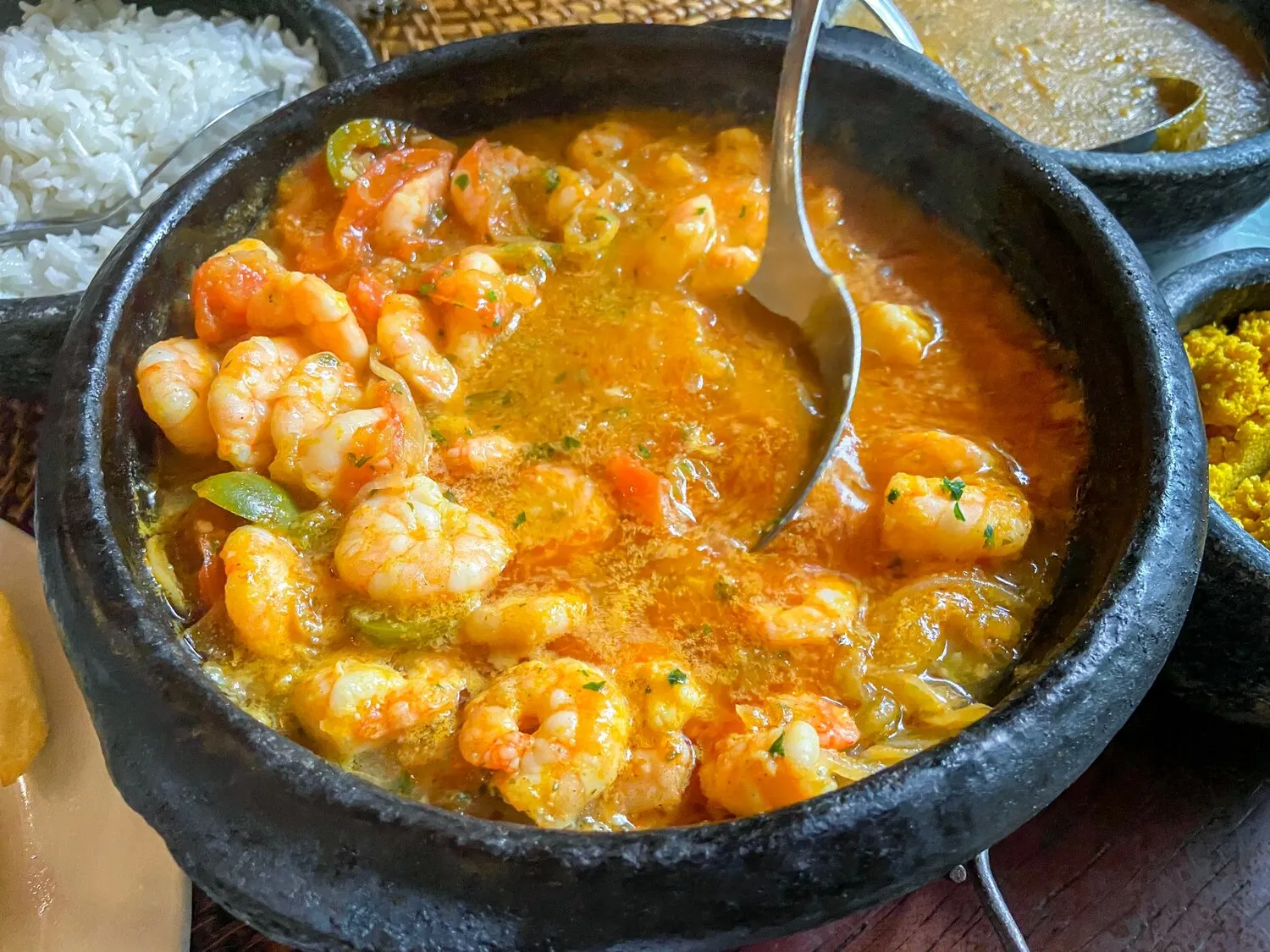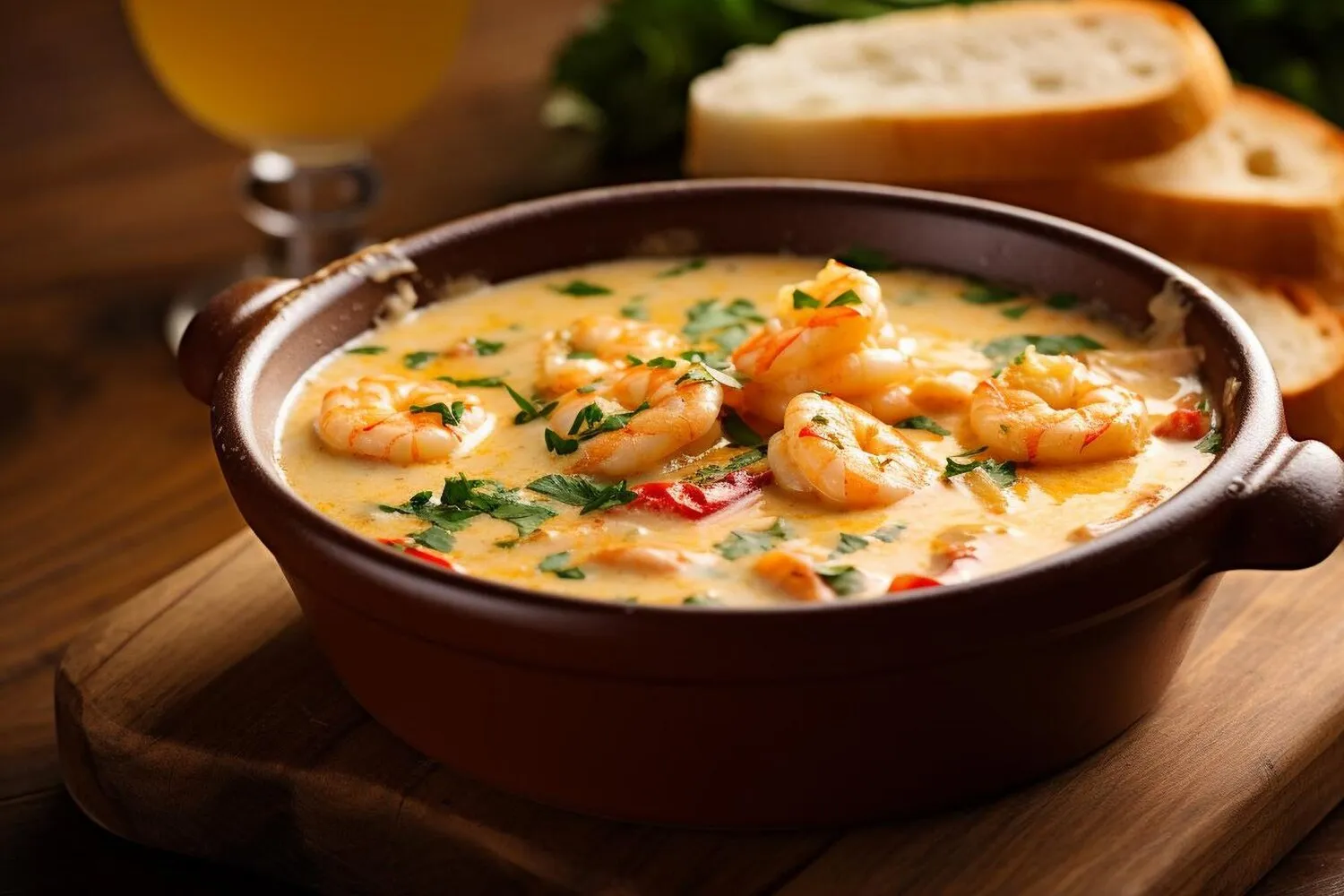
Moqueca de Peixe
A popular Brazilian fish stew cooked in a clay pot with coconut milk, tomatoes, onions, peppers, and cilantro.
Nutrition Facts
* The % Daily Value (DV) tells you how much a nutrient in a serving of food contributes to a daily diet. 2,000 calories a day is used for general nutrition advice.
Frigideira do Jonnhy
Moqueca's origins are debated, but it is widely believed to have emerged from a fusion of Indigenous Brazilian cooking techniques, Portuguese colonial influences, and African ingredients brought by enslaved people. Indigenous methods of cooking fish in leaves over a fire likely contributed to the stew's foundation. Portuguese colonizers introduced European ingredients like onions, garlic, and olive oil, while enslaved Africans brought coconut milk, palm oil (dendê), and other spices that further enriched the dish, resulting in regional variations over time.
Moqueca is more than just a dish; it's a cultural symbol deeply intertwined with Brazilian identity, particularly in the coastal regions of Bahia and Espírito Santo. It represents a celebration of local ingredients and culinary traditions, often prepared and shared during family gatherings and festive occasions. The act of cooking moqueca itself can be a communal experience, with different family members contributing to the preparation.
Regional Variations
While Moqueca Capixaba (from Espírito Santo) uses olive oil and annatto for color, Moqueca Baiana (from Bahia) incorporates dendê oil (palm oil), coconut milk and malagueta peppers, resulting in a richer, more intensely flavored dish.
Family Tradition
Recipes are often passed down through generations, with each family adding their unique touch and variations to the basic recipe. Cooking Moqueca together strengthens bonds.
Celebratory Meal
Moqueca is often served during special occasions, such as birthdays, holidays, and religious festivals. It symbolizes abundance and sharing, bringing people together around the table.
Moqueca de Peixe boasts a vibrant and complex flavor profile, characterized by a harmonious blend of savory, sweet, and subtly spicy notes. The freshness of the fish is paramount, complemented by the creamy richness of coconut milk and the bright acidity of tomatoes. Aromatic herbs and spices add depth and complexity.
The distinct flavor stems from several key components. Fresh white fish (such as sea bass, grouper, or snapper) provides a delicate, clean taste that absorbs the flavors of the other ingredients. Coconut milk contributes a creamy sweetness and richness, balancing the acidity of the tomatoes. Onions, garlic, bell peppers, and tomatoes create a savory base. Cilantro adds a fresh, herbaceous note. Lime juice brings brightness and acidity. Dendê oil (palm oil), used primarily in Bahia's Moqueca Baiana, adds a unique earthy flavor and vibrant orange hue. Malagueta peppers can be added for a spicy kick. Some variations might include other seafood like shrimp or mussels.
Fish Freshness
Using the freshest fish available is crucial for the best flavor. Look for fish with firm flesh, bright eyes, and a fresh, clean smell. Frozen fish can be used in a pinch, but fresh is always preferred.
Clay Pot Advantage
Traditionally, Moqueca is cooked in a clay pot, which helps to distribute heat evenly and impart a unique earthy flavor to the stew. If you don't have a clay pot, a heavy-bottomed pot or Dutch oven can be used as a substitute.
Gentle Simmer
Avoid boiling the Moqueca, as this can toughen the fish and cause the coconut milk to curdle. Maintain a gentle simmer over low heat to allow the flavors to meld together slowly.
Layering Flavors
Layer the ingredients strategically in the pot, starting with the vegetables and ending with the fish and herbs. This allows the flavors to infuse into each other gradually.
Explore additional Brazilian Seafood dishes and restaurants
Explore Brazilian SeafoodDiscover top dining spots and culinary experiences in Fortaleza.
Explore FortalezaLearn more about the food culture, restaurant scene, and culinary heritage of Brazil.
Explore Brazil
